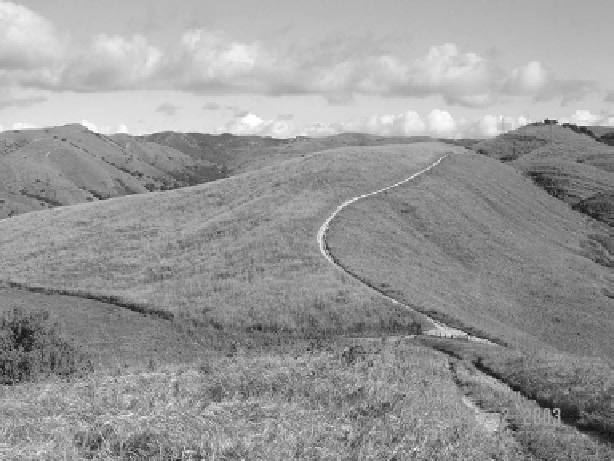Agriculture Reference
In-Depth Information
Box 12.2 Control of Invasive Plants with Prescription Burning
Although fire promotes alien plant invasions in MTC ecosystems, it is also
advocated as a management tool to be used to control some particularly noxious
invasive plants (DiTomaso
et al.
2006
). There are two very important caveats
about use of fire to control alien species. One is that although short-term
reductions in some alien species can be accomplished, long-term sustainable
control is far less likely. Secondly, while fire may control a particular
target alien species, unless burning is accompanied by active native plant restor-
ation, this target will often be replaced by other alien species rather than by more
desirable native species (e.g.
Fig. B12.2.1
). Similar issues can be raised with
regard to other presumed control methods such as goat grazing (e.g. Thomsen
et al.
1993
).
Where sustainable control of target alien species with fire has been most
clearly demonstrated is with woody aliens. For example, the Mediterranean
Basin postfire seeding shrub
Cytisus scoparius
and related “brooms” are inva-
sive shrubs in degraded grasslands in California. They are weak resprouters but
maintain dormant seedbanks with fire-stimulated germination. A single fire
Fig. B12.2.1
Example of unanticipated outcomes from prescription burns planned to target
certain species. Prior to burning, this landscape in the Santa Monica Mountains National
Recreation Area of Ventura County, California, was dominated by the non-native annual
ripgut grass
Bromus diandrus
, which was the target of the burn that occurred to the left of
the road. Ripgut grass persists in the unburned area to the right of the road but was replaced
by an even more noxious alien, black mustard or
Brassica nigra
, to the left of the road.
(Photo by Dr. Marti Witter, National Park Service.)
Continued




